15 Ng. 100 Đ. Nguyễn Xiển, Thanh Xuân Nam, Thanh Xuân, Hà Nội 100000
While the name "Angkor" immediately evokes images of Angkor Wat's iconic grandeur, Cambodia holds another architectural marvel that transcends mere earthly beauty: Preah Vihear Temple. Perched dramatically atop a 525-meter (1,722-foot) cliff in the Dângrêk Mountains, overlooking the vast Cambodian plains, this UNESCO World Heritage site offers a truly unparalleled experience that combines breathtaking natural beauty with profound historical and architectural significance. Unlike the centralized complexes of Angkor, Preah Vihear is an extraordinary linear temple, a symbolic pilgrimage route stretching nearly a kilometer from its lowest southern entrance to its climactic northern sanctuary at the very edge of the precipice.
Preah Vihear is a testament to centuries of Khmer devotion and architectural ingenuity, its construction spanning from the 9th to the 12th century, bearing the indelible marks of multiple kings. It is a place of immense spiritual power, dedicated primarily to the Hindu deity Shiva, embodying the concept of a "temple mountain" in its most literal and awe-inspiring form. The journey to Preah Vihear is an adventure in itself, leading you through lush landscapes to an elevated sanctuary that feels truly "above the clouds," offering panoramic vistas that stretch as far as the eye can see. Though it has seen its share of historical conflicts over its coveted location, today Preah Vihear stands as a beacon of peace and a welcoming destination for travelers seeking a profound connection with Cambodia's ancient past and its stunning natural beauty.
In this comprehensive guide, we will embark on an immersive exploration of Preah Vihear. We'll delve into its fascinating multi-century history, its unique linear architectural design, and the spiritual and strategic significance of its dramatic cliff-top location. Furthermore, we’ll provide you with all the practical information you need to plan your expedition, including how Golden Trail Travel can seamlessly facilitate your discovery of this captivating and adventurous Cambodian treasure, ensuring a journey that is both insightful and truly unforgettable.
Preah Vihear is distinct from many other Khmer temples in its long and complex construction history, evolving over centuries from a humble hermitage to a sprawling, magnificent pilgrimage site. Its story is intertwined with the reigns of several powerful kings and punctuated by a modern history of international dispute over its dramatic location.
The history of Preah Vihear stretches back to the early 9th century, predating many of the major temples in the Angkor complex.
Ascetic Retreats: The site likely began as a remote mountain hermitage, a sacred space for ascetics and hermits seeking spiritual solace and proximity to the gods amidst the stunning natural setting of the Dângrêk Mountains. The natural springs and caves would have drawn early devotees.
Lingam Worship: Even in its earliest forms, the site would have been associated with the worship of Shiva, particularly through the veneration of a lingam (the aniconic representation of Shiva) as "Sikharesvara" or "Lord of the Peak." The mountain itself was revered as sacred.
The first significant architectural developments at Preah Vihear are attributed to King Yasovarman I (reigned 889–910 CE). Known for establishing the first Angkorian capital, Yasodharapura, and building Phnom Bakheng, Yasovarman also began the systematic development of Preah Vihear.
Early Permanent Structures: Yasovarman I is credited with initiating the construction of a processional pathway and possibly the very first, basic gopuras (entrance pavilions) or shrines at the site. This marked the transition from simple hermitages to a more organized temple complex.
Emphasis on Pilgrimage: His additions helped solidify Preah Vihear's role as an important pilgrimage destination, establishing the linear axis that would define its later development. Pilgrims would ascend the mountain, passing through successive gates, a symbolic journey towards the divine.
A major period of construction and expansion occurred under King Suryavarman I (reigned 1006–1050 CE), a powerful king who unified the empire and significantly expanded its territories.
Consolidation of Form: Suryavarman I's reign saw the construction of more substantial sandstone gopuras and galleries, particularly those leading to the main sanctuary. He established the layout of interconnected courtyards and shrines that would form the core of the temple's linear design.
Artistic Style: The architectural and sculptural elements from this period show early examples of the refined Khmer style, with intricate carvings that would foreshadow the later classical Angkorian period. He further enhanced the temple's status as a premier pilgrimage site dedicated to Shiva.
The most extensive and magnificent construction at Preah Vihear occurred under King Suryavarman II (reigned 1113–1150 CE), the renowned builder of Angkor Wat.
Angkor Wat Style: It was during Suryavarman II's reign that Preah Vihear gained much of its current grandeur and its distinct architectural style, incorporating elements of the classical Angkor Wat period. This includes the finely carved lintels, pediments, and overall aesthetic that reflect the peak of Khmer artistry.
Final Form of the Sanctuary: He completed the central sanctuary, causeways, and the grand gopuras, giving the temple its current form and scale. The temple became a testament to his piety and power, mirroring his monumental efforts at Angkor Wat.
Dedicated to Shiva (Sikharesvara): Throughout these centuries of construction, Preah Vihear remained primarily dedicated to Shiva as Sikharesvara, the "Lord of the Mountain," reflecting its unique cliff-top location and its profound spiritual connection to the Hindu cosmos.
Preah Vihear's dramatic location on a disputed border has led to a complex modern history, marked by conflict and international legal battles.
Colonial Mapping Disputes: The border between Cambodia and Thailand (then Siam) was drawn by French colonial maps in the early 20th century. These maps placed Preah Vihear on the Cambodian side, despite the natural watershed being on the Thai side.
The 1962 ICJ Ruling: Following decades of claims and counter-claims, the International Court of Justice (ICJ) in The Hague famously ruled in 1962 that the temple belonged to Cambodia, upholding the French colonial maps. This ruling established a clear legal precedent for its ownership.
Recent Tensions and UNESCO Listing: Despite the ruling, tensions flared again, particularly after Cambodia's application for UNESCO World Heritage status. When Preah Vihear was officially listed by UNESCO in 2008, it reignited a series of border skirmishes between Cambodian and Thai forces in the years that followed (up until around 2011). These conflicts, while significant, were ultimately resolved, and the temple is now firmly under Cambodian control and a peaceful, safe tourist destination.
Current Peace and Accessibility: Today, Preah Vihear stands as a powerful symbol of Cambodian heritage and a testament to the resilience of its people. It is accessible from the Cambodian side, welcoming visitors from around the world to marvel at its beauty and historical depth in a secure environment.
Preah Vihear's history is a captivating blend of devotion, ambition, and resilience, making its exploration a journey through centuries of Khmer civilization, culminating in a powerful symbol of national pride and a UNESCO-recognized global treasure.
Preah Vihear's architectural design is truly unique among Khmer temples, defined by its extraordinary linear layout that stretches for almost a kilometer, ascending dramatically along a sacred axis towards the cliff's edge. This design perfectly integrates the temple with its natural environment, creating a powerful sense of pilgrimage and revelation.
Unlike the concentric, largely symmetrical layouts of temples like Angkor Wat or Angkor Thom, Preah Vihear is built along a single, continuous axis, moving from south to north, rising gradually through successive levels towards the final sanctuary at the highest point. This design evokes the journey of a pilgrim ascending a sacred mountain.
Length: The complex stretches approximately 800 meters (about half a mile) from its lowest southern entrance to its final northern sanctuary overlooking the cliff.
Elevation Gain: As one progresses through the temple, the elevation gradually increases, culminating in the breathtaking views from the precipice.
The temple is characterized by a series of five distinct gopuras (pylons or entrance pavilions), each marking a stage of the ascent and gradually decreasing in size as one moves towards the summit, creating a dramatic sense of receding perspective and building anticipation.
Gopura I (Southernmost Entrance): This is the outermost, largest, and lowest gopura, marking the formal ceremonial entrance to the temple complex. It's often the first structure visitors encounter after arriving at the base of the mountain. Though partially ruined, its scale hints at the grandeur within. It features a long processional causeway leading up to it.
Gopura II: Standing on a higher level, this gopura is still substantial. It often features well-preserved lintels and pediments, showcasing intricate carvings from various periods of the temple's construction. Passageways lead through its central section, flanked by long, narrow galleries that once provided shelter or served ceremonial functions.
Gopura III (The "Money Shot" Gopura): This is arguably the most visually stunning and iconic gopura at Preah Vihear. It is renowned for its magnificent bas-reliefs, intricately carved lintels, and its overall architectural sophistication. The perspective through its central opening towards Gopura IV and the final sanctuary creates a powerful vista. From certain angles, the combination of intricate carving and the distant natural backdrop is breathtaking, making it a favorite for photographers.
Gopura IV: Smaller than the preceding ones, but still architecturally significant. It provides a more intimate transition as the temple narrows and the ascent becomes steeper. The focus here shifts towards the final, most sacred spaces.
Gopura V (Northernmost & Cliff Edge): This is the final and smallest gopura, opening directly onto the highest terrace of the temple. Its main purpose is to frame the ultimate sacred space – the central sanctuary – and lead the worshipper to the dramatic precipice. Passing through this gopura reveals the culmination of the pilgrimage: the breathtaking panoramic view from the cliff edge.
Connecting these gopuras are long causeways, often flanked by colonnaded galleries and ruined pavilions, which served as processional routes, assembly halls, or perhaps storage spaces.
Processional Walkways: The causeways are vital to the linear experience, guiding visitors through the various levels of the temple.
Side Chambers and Courtyards: Between the gopuras, smaller courtyards and side chambers dot the complex, some housing subsidiary shrines or administrative buildings in ancient times.
At the very northern end, beyond Gopura V, lies the central sanctuary (Prasat), the most sacred part of the temple, perched precariously close to the cliff edge.
Main Prang: The central prang (tower) would have housed the primary lingam dedicated to Shiva (Sikharesvara). While the tower itself is largely ruined, the platform and some of its base remain, emphasizing its former significance.
The Precipice: The most dramatic feature is the proximity of the central sanctuary to the sheer cliff face. This creates an unparalleled sense of majesty and spirituality, truly placing the deity at the "Lord of the Peak."
Despite centuries of exposure and some damage, Preah Vihear retains some of the most exquisite Khmer carvings, showcasing the evolution of artistic styles across its long construction period.
Lintels and Pediments: Look closely at the lintels (horizontal beams above doorways) and pediments (triangular spaces above lintels) on the gopuras and other structures. These are often richly carved with scenes from Hindu mythology.
Mythological Narratives: Common themes include depictions of Vishnu on Garuda, Krishna lifting Mount Govardhan, scenes from the Ramayana and Mahabharata, and various Hindu deities, devatas (female deities), and apsaras (celestial dancers).
Stylistic Evolution: The carvings show distinct stylistic variations, reflecting the changing artistic trends from the 10th to the 12th centuries, a fascinating study for art historians. The work from Suryavarman II's era, in particular, demonstrates the refined elegance of the Angkor Wat style.
Dvarapalas and Guardians: Guardian figures (Dvarapalas) stand watch at doorways, protecting the sacred spaces.
The architecture of Preah Vihear is a masterful blend of human ingenuity and natural grandeur. Its linear, ascending design culminates in a dramatic climax at the cliff edge, creating an unforgettable and spiritually uplifting experience for all who undertake the journey.
Visiting Preah Vihear is far more than just a standard temple tour; it's an immersive expedition that engages all your senses, offering a profound connection to ancient history, dramatic natural beauty, and a unique sense of pilgrimage.
The journey to Preah Vihear is an integral part of the experience, building anticipation before you even set foot in the temple proper.
The Drive to the Base: The drive from Siem Reap to the base of the Dângrêk Mountains (Preah Vihear Province) takes you through rural Cambodian landscapes, offering glimpses of local life, rice fields, and villages, providing a context for the temple's remote location.
The Steep Climb by Local Transport: Once at the base of the mountain, visitors transfer to specialized local transport—either a powerful 4x4 vehicle or the back of a motorbike. The road up the mountain is incredibly steep and winding, providing an exhilarating, almost roller-coaster-like ride. This dramatic ascent underscores the temple's commanding position and adds to the sense of adventure, as you literally climb towards the heavens.
Upon reaching the top, the most striking feature of Preah Vihear is its breathtaking location.
Panoramic Vistas: From the northernmost point of the temple, at the very edge of the precipice, you are greeted by truly panoramic views that stretch for dozens of kilometers over the vast, flat Cambodian plains below. On a clear day, you can see the emerald green carpet of the jungle fading into the distant haze.
"Above the Clouds" Feeling: Especially during the early morning or after a rain shower, mist often swirls below the cliff edge, creating an ethereal "above the clouds" feeling. It's a truly humbling experience, emphasizing the temple's spiritual connection to the sky and the gods.
Serenity and Grandeur: The sheer scale of the landscape combines with the ancient grandeur of the temple to create a profound sense of awe and serenity, a powerful contrast to the bustling crowds of central Angkor.
The temple's unique linear layout dictates the exploration, transforming it into a symbolic journey.
Step-by-Step Revelation: As you walk from Gopura I through to Gopura V, the temple slowly reveals itself. Each gopura acts as a frame, offering a new perspective on the structures ahead and the landscape around you. The decreasing size of the gopuras as you ascend enhances the sense of dramatic perspective, pulling you forward.
Discovering Hidden Details: Along the long causeways and within the galleries, you'll find intricate carvings, weathered bas-reliefs, and fragments of ancient statuary. Taking your time allows you to discover these artistic whispers of the past.
Sense of Pilgrimage: The entire experience mirrors an ancient pilgrimage, a slow, spiritual ascent towards the sacred sanctuary and the divine presence at the peak.
Preah Vihear is a photographer's dream, offering an abundance of unique and dramatic opportunities.
Landscape Panoramas: The cliff-top views are unparalleled, perfect for wide-angle landscape shots, especially during sunrise or sunset.
Architectural Composition: The linear layout and the framed views through the successive gopuras offer incredible opportunities for architectural compositions, playing with perspective and depth.
Artistic Details: The intricately carved lintels and pediments, with their Hindu mythological scenes, provide excellent subjects for close-up and detail photography.
Light and Shadow: The changing light throughout the day dramatically alters the appearance of the stone, creating dynamic contrasts and textures.
Preah Vihear exudes an atmosphere that is deeply spiritual and peaceful, a welcome respite from the more tourist-heavy sites.
Fewer Crowds: Due to its remote location and the effort required to reach it, Preah Vihear typically has far fewer visitors than the main Angkor temples. This allows for a more personal and reflective experience.
Reverence: The site's long history as a pilgrimage destination, its dedication to Shiva, and its dramatic natural setting imbue it with a palpable sense of reverence.
Connecting with the Past: Standing at the cliff edge, overlooking the vast plains, it's easy to imagine the ancient pilgrims, kings, and priests who once performed rituals here, drawing strength and inspiration from this sacred mountain.
A visit to Preah Vihear is an unforgettable expedition that combines the thrill of adventure with the profound beauty of ancient Khmer architecture and the breathtaking grandeur of Cambodia's natural landscapes, leaving an indelible mark on all who undertake the journey to its heavenly peak.
Preah Vihear's remarkable historical and architectural significance, coupled with its dramatic setting, led to its inscription as a UNESCO World Heritage site. This designation, while crucial for its preservation, also rekindled past geopolitical tensions, which have since largely subsided, allowing for peaceful tourism and ongoing conservation.
Outstanding Universal Value: Preah Vihear was inscribed on the UNESCO World Heritage List in July 2008. Its inscription recognized its "outstanding universal value" as a masterpiece of Khmer architecture, demonstrating a remarkable linear plan, and its harmonious integration into an exceptional natural landscape. It is also noted for its high quality of carved stone ornamentation and its long history of construction reflecting successive periods of Khmer architecture.
Symbol of National Heritage: For Cambodia, the UNESCO listing was a moment of immense national pride and recognition of its rich cultural heritage.
The UNESCO listing, unfortunately, triggered a series of border clashes between Cambodia and Thailand from 2008 to 2011, stemming from the long-standing dispute over the small piece of land around the temple.
Historical Context: As discussed in the history section, the dispute originated from French colonial maps and was formally ruled upon by the International Court of Justice (ICJ) in 1962, awarding the temple to Cambodia. However, the exact demarcation of the surrounding land remained contentious.
Renewed Tensions: The UNESCO inscription, perceived by some as granting Cambodia unilateral control over the area, led to renewed military confrontations.
Peaceful Resolution: Through diplomatic efforts and a further ICJ clarification in 2013 affirming Cambodia's sovereignty over the entire promontory of Preah Vihear, the situation has largely stabilized. Today, the area is peaceful and secure, with both Cambodian and Thai authorities working to manage the border in a cooperative manner. It is crucial for visitors to understand that the temple is now a safe and welcoming destination, fully accessible from the Cambodian side.
Preserving a temple of Preah Vihear's age and dramatic location, exposed to the elements, presents significant challenges.
Cambodian APSARA Authority: The APSARA Authority (Authority for the Protection and Management of Angkor and the Region of Siem Reap) is the primary Cambodian governmental body responsible for the management and conservation of Preah Vihear, working in collaboration with various international partners.
Structural Stabilization: Efforts focus on stabilizing precarious structures, preventing further erosion from wind and rain, and mitigating the impact of seismic activity. Given its cliff-top location, careful engineering is required to ensure long-term stability.
Vegetation Management: The tropical climate means constant vigilance is needed to manage encroaching vegetation, preventing tree roots from further damaging the delicate masonry while preserving the natural integration that adds to its aesthetic.
Visitor Management: As the temple's popularity grows, managing visitor flow and impact to prevent damage to the ancient stones is also a critical part of conservation efforts. This includes maintaining walkways and ensuring respectful conduct.
Research and Documentation: Ongoing archaeological research and architectural documentation contribute to a deeper understanding of the temple, informing future conservation strategies.
Preah Vihear's journey from a contested ruin to a recognized UNESCO masterpiece underscores the global commitment to preserving cultural heritage. Its current peaceful accessibility allows visitors to witness not only its ancient grandeur but also the successful efforts to safeguard it for future generations.
A visit to Preah Vihear is a full-day commitment from Siem Reap, but the extraordinary experience makes the journey more than worthwhile. Careful planning ensures a smooth and memorable trip.
Location: Preah Vihear Temple is located in Preah Vihear Province, in northern Cambodia, right on the border with Thailand, atop the Dângrêk Mountains.
Access Point: The temple is exclusively accessed from the Cambodian side. There is no direct tourist access from Thailand.
Distance from Siem Reap: Approximately 200 kilometers (125 miles) northeast of Siem Reap.
The journey to Preah Vihear is an adventure in itself, typically involving two main stages from Siem Reap:
Siem Reap to the Base of the Mountain:
Private Car/Taxi: This is the most recommended option for comfort and efficiency. The drive takes approximately 3.5 to 4 hours each way on mostly paved roads. This provides air conditioning and flexibility.
Shared Minivan/Bus: Less common for direct trips to Preah Vihear, but some tour companies might offer shared options.
Base of the Mountain to the Temple (Summit):
Upon arrival at the base of the mountain (at the entrance gate in the village of Sra Em), you will transfer to specialized local transport. Your private car/taxi will not be able to drive up the steep, winding road.
Local 4x4 Pick-up Truck: This is the most common and safest option. These vehicles are powerful enough to handle the extremely steep gradients. The ride up takes about 20-30 minutes and is quite exhilarating. Cost is typically around $25-30 for the return trip, shared among passengers or paid per vehicle.
Motorbike Taxi (Motodup): For the more adventurous, a local motorbike taxi can take you up. This is usually slightly cheaper but less comfortable and potentially more exposed.
Separate Entrance Fee: Preah Vihear Temple is NOT included in the standard Angkor Pass. You will need to purchase a separate entrance ticket at the base of the mountain.
Cost: Typically around $10-15 USD per person.
This fee is in addition to the local transport fee up the mountain.
Early Morning: Absolutely essential. Aim to depart Siem Reap by 6:00 AM - 6:30 AM to arrive at the temple early. This allows you to explore in cooler temperatures, before the midday heat, and experience the magical soft light for photography. It also helps avoid any potential crowds (though generally fewer than Angkor).
Dry Season (November to May): This is the ideal period. You'll have clearer skies for panoramic views, more comfortable temperatures, and dry paths.
Wet Season (June to October): While the views might be more misty (which can be beautiful), and the roads potentially slippery, the surrounding plains will be incredibly green. Be prepared for rain showers.
At the Temple Site: Allocate 2 to 3 hours to thoroughly explore the temple complex, walk through its gopuras, and enjoy the panoramic views from the cliff edge.
Total Trip from Siem Reap: Expect a full-day trip, typically 10 to 12 hours return, including travel time and exploration at the site.
Modest Dress: As a sacred site, modest clothing (covering shoulders and knees) is required for both men and women.
Sturdy Footwear: Wear comfortable, closed-toe walking shoes or hiking sandals with good grip. You'll be walking on uneven stone surfaces and potentially some slopes.
Sun Protection: Bring a wide-brimmed hat, sunglasses, and high-SPF sunscreen. Even with shade, the sun can be intense.
Hydration: Carry plenty of bottled water. There are some local vendors at the top, but having your own supply is crucial.
Insect Repellent: Recommended, especially if you plan to walk through surrounding areas or visit during the wet season.
Passport/ID: While not always strictly checked for Cambodian citizens, it's advisable to carry your passport or a copy of your identification due to the temple's proximity to the international border.
Photography: The views are spectacular. Bring your camera with extra batteries and memory cards. Respect local customs and other visitors.
Local Guide: Hiring a licensed local guide (often arranged through your tour operator) is highly recommended. They can provide invaluable historical and cultural context, point out hidden carvings, and navigate you through the linear complex efficiently.
Physical Fitness: A moderate level of physical fitness is recommended due to the ascent (in the local vehicle) and the walking involved within the temple complex.
Preah Vihear offers an unparalleled blend of adventure, history, and natural grandeur. A well-planned trip will ensure you experience the full majesty of this "Stairway to the Heavens."
For an effortless, enriching, and truly awe-inspiring exploration of Preah Vihear Temple, Cambodia's dramatic cliff-top UNESCO World Heritage site, Golden Trail Travel is your ideal partner. We specialize in crafting bespoke Cambodian adventures that delve deep into the country's most compelling historical sites and unique natural landscapes, ensuring you experience them with unparalleled comfort, profound insight, and unwavering commitment to responsible tourism.
Golden Trail Travel possesses an in-depth understanding of Preah Vihear's unique allure, its long and complex history, and the logistical intricacies of reaching this remote yet magnificent temple. Our meticulously planned tours handle all aspects, from comfortable, air-conditioned private transportation directly from your accommodation in Siem Reap to arranging the specialized local transport up the steep mountain road, securing your entrance tickets, and providing access to expert local guides. Our guides illuminate Preah Vihear's multi-century saga, navigate its unique linear layout, and help you discover its exquisite carvings and the profound spiritual significance of its dramatic setting safely and respectfully. We prioritize authentic, adventurous experiences, ethical tourism practices, and your absolute comfort and safety.
Why choose Golden Trail Travel for your Preah Vihear expedition?
Expertly Designed Full-Day Itineraries: We craft comprehensive full-day tours that focus on Preah Vihear, optimizing your schedule to ensure you reach the temple early for the best experience (cooler temperatures, fewer crowds, optimal light). We handle the multi-stage journey seamlessly.
Knowledgeable and Passionate Local Guides: Our guides are not just escorts; they are licensed, highly experienced, and deeply passionate about Khmer history, culture, and the natural environment. They bring the ancient stones of Preah Vihear to life with captivating stories spanning centuries of construction, insights into its unique linear design, and the significance of its dedication to Shiva. They excel at pointing out the finest carvings and ensuring safe navigation through the complex.
Seamless and Stress-Free Logistics: We handle all transportation arrangements, from your comfortable private car from Siem Reap to arranging the powerful local 4x4 vehicle for the thrilling ascent up the mountain. This eliminates all logistical worries, allowing you to relax and fully immerse yourself in the awe-inspiring atmosphere of the temple.
Authentic and Immersive Experience: Our tours are designed to provide a genuine and profound experience of Preah Vihear's dramatic setting and historical significance. We encourage respectful exploration and provide opportunities to connect with the unique "stairway to the heavens" ambiance, truly embodying the spirit of pilgrimage that defines this site.
Commitment to Responsible Tourism: At Golden Trail Travel, we are deeply committed to sustainable and ethical tourism practices. Our tours operate with the utmost respect for the ancient monuments, the fragile natural environment, and the local communities surrounding the park. We ensure that your visit contributes positively to the preservation of Cambodia's invaluable heritage and supports local livelihoods.
Customer-Centric Approach and Flexibility: Your comfort, safety, and ultimate satisfaction are our absolute top priorities. We offer flexibility to cater to your specific interests, pace, and preferences, whether you're a history enthusiast, a keen photographer, an adventure seeker, or simply looking for a spiritual escape into ancient wonders.
Don't miss the opportunity to explore the breathtaking beauty and profound history of Preah Vihear Temple, Cambodia's magnificent cliff-top masterpiece. Allow us to guide you on this remarkable journey, where every step on the ancient causeways and every glance from the precipice reveals a new dimension of ancient Khmer grandeur and spiritual power. Visit our website today at https://goldentrailtravel.com/ to explore our remote temple tour options that include Preah Vihear and book your unforgettable Cambodian adventure to the heavens!
Hear what our esteemed customers have to say about their unforgettable Preah Vihear experiences with Golden Trail Travel:
"Our visit to Preah Vihear with Golden Trail Travel was the absolute highlight of our entire Cambodia trip. The drive up the mountain was an adventure, and then suddenly you're at the top, and the views are just indescribable. It truly felt like a temple above the clouds. Our guide was incredibly knowledgeable and made the long journey so worthwhile!" — Eleanor V., Canada
"Preah Vihear is a hidden gem. It’s a full day, but the unique linear design and the sheer cliff-top location are unlike anything else. Golden Trail Travel made the logistics effortless, arranging comfortable transport and a fantastic local guide. The peace and views from the top were simply majestic. Highly recommend this unique experience." — Thomas M., United Kingdom
"As a photographer, Preah Vihear offered unparalleled opportunities. The panoramas from the cliff edge and the framed views through the gopuras are just stunning. Golden Trail Travel ensured we got there early for the best light and minimal crowds. Their attention to detail was exceptional." — Isabella R., United States
"I was a bit nervous about the journey, but Golden Trail Travel made it so comfortable and safe. The local 4x4 ride up the mountain was thrilling! The temple itself is a spiritual marvel. Walking through the gopuras and reaching the summit felt like a true pilgrimage. It’s a powerful place, beautifully preserved." — Dr. Li Wei, Singapore
"Preah Vihear is a testament to Khmer ingenuity and resilience. Learning about its long history of construction and its modern border story from our Golden Trail Travel guide was fascinating. The temple's linear layout, leading to that incredible view, makes it a deeply immersive experience. A must-do for serious travelers." — Jean-Luc D., France
Here are some common questions about visiting Preah Vihear Temple to help you plan your extraordinary expedition:
Q1: What is Preah Vihear Temple and why is it famous? A1: Preah Vihear Temple is an ancient Khmer temple dedicated to Shiva, uniquely built along a linear axis on top of a 525-meter (1,722-foot) cliff in the Dângrêk Mountains, overlooking Cambodia. It is famous for its dramatic location, exquisite architecture, long history of construction spanning centuries, and its status as a UNESCO World Heritage site.
Q2: Who built Preah Vihear Temple? A2: Preah Vihear was built and expanded over several centuries by various Khmer kings, with significant contributions from Yasovarman I (9th-10th century), Suryavarman I (11th century), and most notably Suryavarman II (12th century), the builder of Angkor Wat.
Q3: Where is Preah Vihear Temple located and how do I access it? A3: Preah Vihear is located in northern Cambodia, right on the border with Thailand. It is exclusively accessed from the Cambodian side, typically from Siem Reap. Visitors usually drive to the base of the mountain, then transfer to a local 4x4 vehicle or motorbike taxi for the steep ascent to the temple.
Q4: Is Preah Vihear Temple included in the standard Angkor Pass? A4: No, Preah Vihear Temple is NOT included in the standard Angkor Pass. You will need to purchase a separate entrance ticket at the base of the mountain (typically around $10-15 USD per person) in addition to the local transport fee up the mountain.
Q5: What are the main highlights or must-see features at Preah Vihear? A5: The main highlights include the five successive gopuras (entrance pavilions) that guide your linear ascent, the intricate carvings on lintels and pediments, the various halls and galleries, and most spectacularly, the breathtaking panoramic views from the northern cliff edge overlooking the Cambodian plains.
Q6: What is the best time of day and year to visit Preah Vihear? A6: The best time of day is early morning (departing Siem Reap by 6:00-6:30 AM) to avoid heat and crowds, and for optimal light for photography. The dry season (November to May) offers the clearest views and most comfortable weather.
Q7: How much time should I allocate for visiting Preah Vihear? A7: You should allocate 2 to 3 hours to thoroughly explore the temple complex itself. Including travel time from Siem Reap (approximately 3.5-4 hours each way), it is a full-day trip, typically lasting 10 to 12 hours in total.
Q8: What should I wear and bring for my visit to Preah Vihear? A8: As a sacred site, modest clothing (covering shoulders and knees) is required. Wear sturdy, comfortable, closed-toe walking shoes with good grip. Bring a hat, sunglasses, high-SPF sunscreen, insect repellent, plenty of water, and it's advisable to carry your passport or a copy of your ID due to border proximity.
Q9: Is it safe to visit Preah Vihear now, given its past border conflicts? A9: Yes, the area around Preah Vihear Temple is now peaceful and safe for tourists. While there were conflicts in the past, diplomatic efforts and international court rulings have resolved the disputes, and the temple is fully under Cambodian control and welcoming visitors.
Q10: How can Golden Trail Travel help me visit Preah Vihear? A10: Golden Trail Travel specializes in organizing seamless and enriching tours to Preah Vihear, providing comfortable private transportation from Siem Reap, arranging the local 4x4 ascent up the mountain, securing tickets, and offering highly knowledgeable local guides. We ensure a stress-free, insightful, and memorable journey to this magnificent UNESCO site. Visit https://goldentrailtravel.com/ to book your expedition!
Preah Vihear is more than just an ancient temple; it is a profound journey, a spiritual ascent that culminates in an experience of unparalleled natural beauty and historical grandeur. Its unique linear design, built over centuries by successive kings, tells a story of unwavering devotion to Shiva and an architectural genius perfectly harmonized with its dramatic cliff-top location. To stand at the edge of its northernmost sanctuary, gazing out over the boundless Cambodian plains, is to feel a powerful connection to both the divine and the sublime, a truly "Stairway to the Heavens."
By choosing to undertake this extraordinary expedition with Golden Trail Travel, you are not just booking a tour; you are investing in an authentic, insightful, and responsible adventure into the very heart of Cambodia's most spectacular historical and natural wonders. We are dedicated to ensuring your journey to Preah Vihear is seamless, comfortable, and deeply enriching, allowing you to connect intimately with the raw power and ancient secrets of this magnificent UNESCO World Heritage site. Let us guide you to this unique destination, where every step on the ancient causeways and every glance from the precipice reveals a new dimension of ancient Khmer glory and spiritual revelation. Your unforgettable Cambodian adventure awaits!
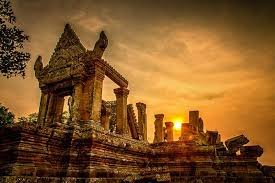
.jpg)
That era is over. The rise of the electric bicycle has fundamentally redefined travel here. E-Bike Vietnam Cycling Holidays offer a revolutionary path, making the country’s most challenging and breathtaking routes, such as the legendary Ha Giang Loop and the Ho Chi Minh Trail, fully accessible to riders of all fitness levels. The E-Bike transforms the journey from a feat of pure endurance into an immersive cultural and scenic delight, allowing you to achieve a profound feeling of conquest while channeling your energy into savoring the profound closeness to nature and the genuine warmth of the local communities.
October 06, 2025
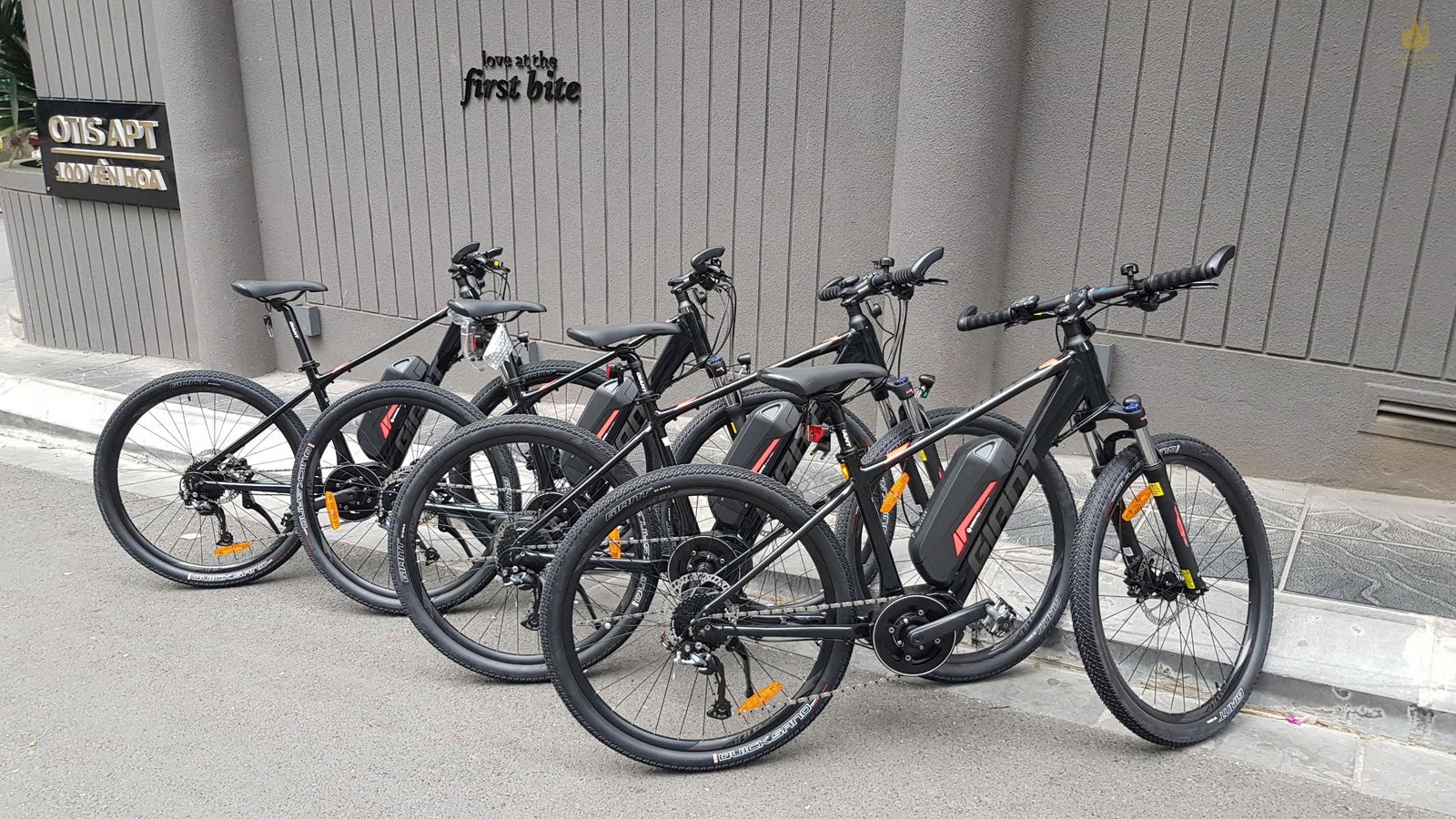
Vietnam, a country famed for its spectacular mountain passes, lush rice terraces, and complex network of historic trails, has long been a dream destination for cyclists. Yet, its challenging geography—characterized by scorching heat, punishing humidity, and immense vertical climbs—often reserves the most breathtaking routes for only the fittest elite. This barrier has now been shattered. The advent of E-Bikes Cycling Vietnam has democratized the adventure, making the country’s most remote and beautiful landscapes accessible to riders of all ages and fitness levels.
October 06, 2025
.jpg)
For the dedicated gravel cyclist, Southeast Asia represents the pinnacle of mixed-terrain exploration. While individual countries offer stunning challenges, the true masterpiece lies in combining them. The cross-border adventure spanning Gravel bike riding in Vietnam and Laos is an unparalleled journey, seamlessly blending the soaring karst mountains of Northern Vietnam with the quiet, forested plateaus and historical trails of Laos.
October 06, 2025
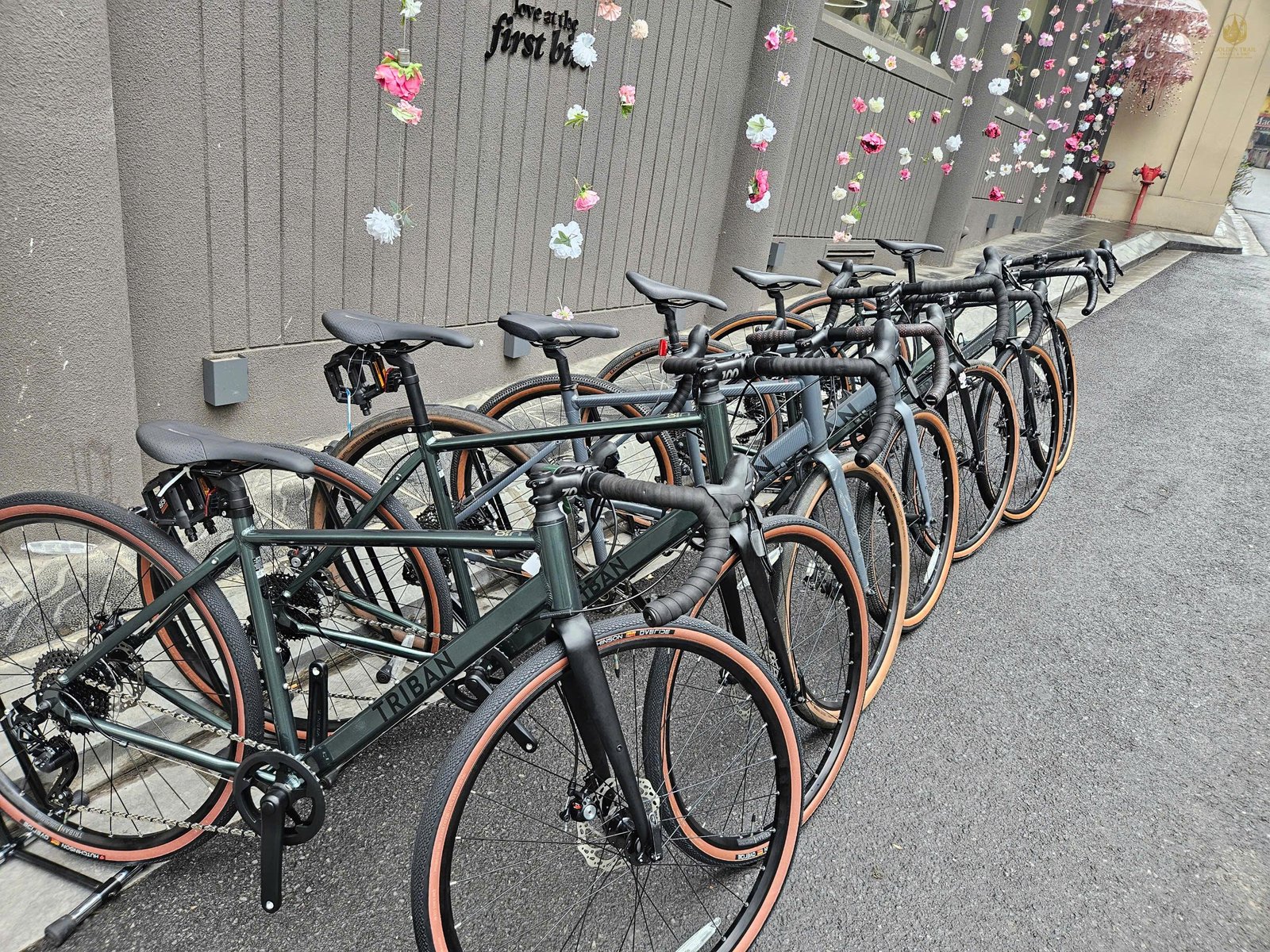
The Ho Chi Minh Trail (HCT)—Đường Trường Sơn in Vietnamese—is more than just a route; it is a legendary tapestry woven from history, endurance, and raw, untamed landscape. While many know the HCT as a symbol of wartime resilience, today it represents the ultimate pilgrimage for the modern adventurer. Forget crowded highways and tourist buses
October 06, 2025

Vietnam is not merely a destination; it is an epic, sensory overload, a land waiting to be discovered inch by inch. While motorbike journeys and bus tours follow the predictable highways, the true soul of this nation—its quiet valleys, timeless hamlets, and untamed mountains—is revealed only to those who dare to take the dirt road.
October 06, 2025

What to Bring on a Vietnam Bike Ride? It is important that the clothing you take on your cycling tour is appropriate for the trip you have chosen. There is a fine balance between taking too much and too little, especially considering that you need to equip yourself for differing levels of physical exertion and also for a range of climatic conditions.
September 09, 2025
.jpg)
Discover the magic of a Vietnam cycling holiday. Explore breathtaking landscapes, immerse yourself in local culture, and embark on an unforgettable adventure through mountains, coastlines, and deltas. Book your dream cycling trip today.
September 05, 2025
.jpg)
Embark on an unforgettable bicycle tour in Vietnam. Explore breathtaking landscapes, immerse yourself in local culture, and experience the ultimate cycling adventure through mountains, coastlines, and deltas. Book your dream bike trip today.
September 05, 2025
.jpg)
Embark on an unforgettable bike tour in Vietnam. Explore breathtaking landscapes, immerse yourself in local culture, and experience the ultimate cycling adventure through mountains, coastlines, and deltas. Book your dream bike trip today.
September 05, 2025
.jpg)
Discover the magic of a Vietnam cycling tour. Explore breathtaking landscapes, immerse yourself in local culture, and embark on an unforgettable adventure through mountains, coastlines, and deltas. Book your dream cycling trip today.
September 05, 2025
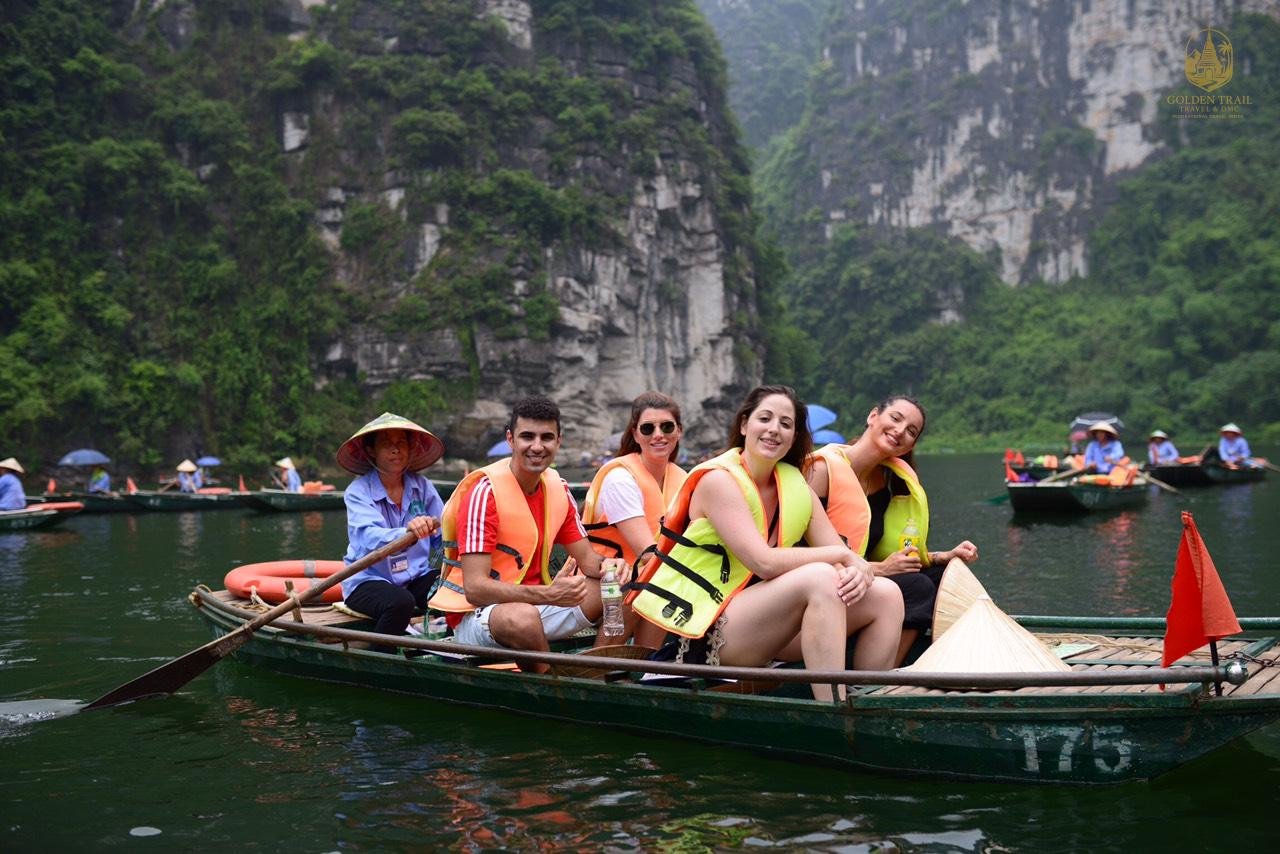
Embark on a serene Ninh Binh boat tour and discover the "Halong Bay on land." Glide through mystical caves and stunning limestone karsts in Tam Coc, Trang An, and Van Long. Book your unforgettable journey with Golden Trail Travel & DMC
August 29, 2025
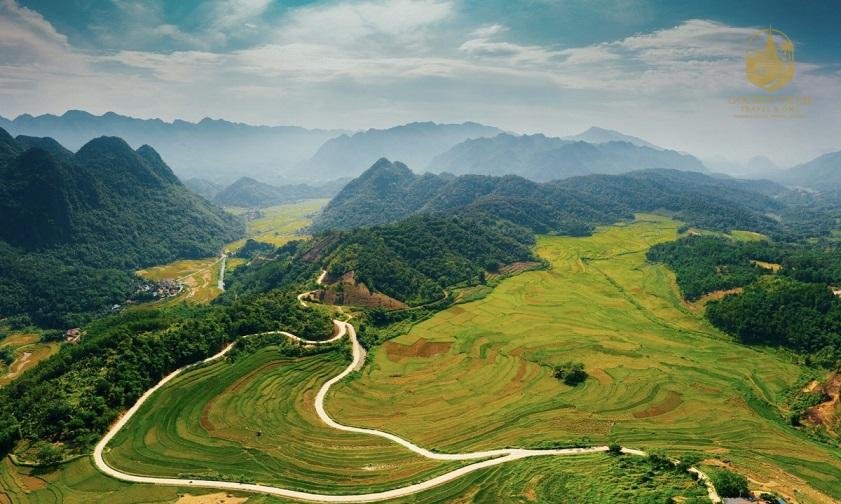
Discover the serene beauty of Pu Luong valley. Trek through lush terraced fields, experience authentic local life, and witness breathtaking landscapes. Book your Pu Luong tour with Golden Trail Travel & DMC.
August 29, 2025
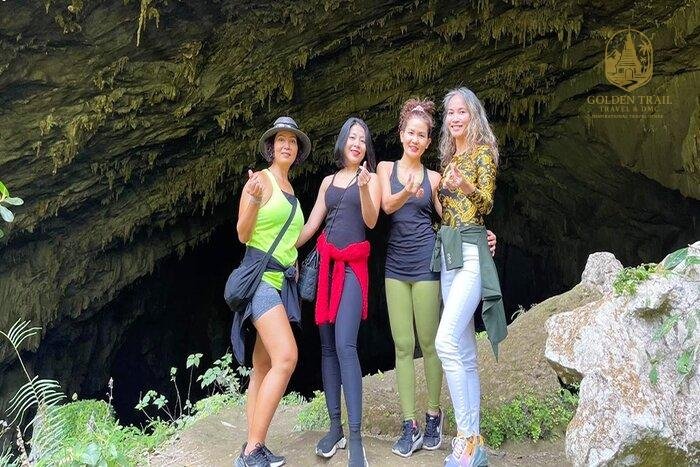
Journey into the heart of Pu Luong to Kho Muong Cave. Trek through stunning landscapes, explore a magnificent bat cave, and experience an authentic adventure. Book your tour with Golden Trail Travel & DMC.
August 29, 2025
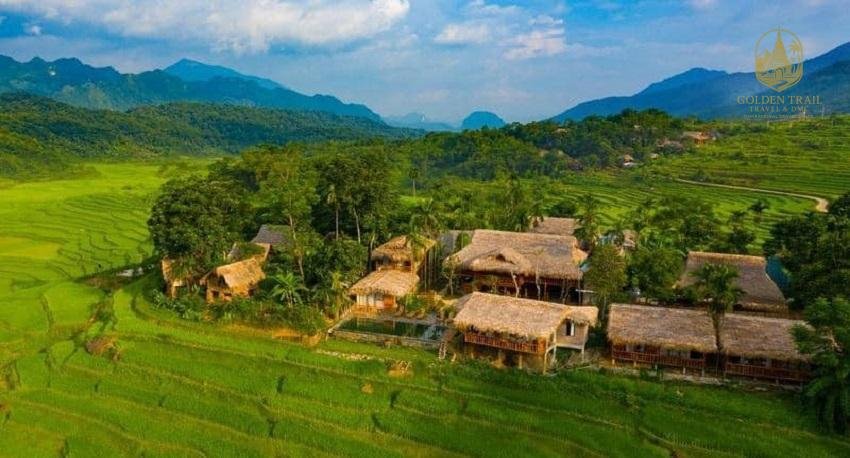
Discover the breathtaking views and authentic culture of Don village in Pu Luong. Trek to its magnificent viewpoints, experience local life, and witness stunning sunrises and sunsets. Book your tour with Golden Trail Travel & DMC.
August 29, 2025

Discover the serene beauty of Hieu village & waterfall. Trek through stunning landscapes, swim in natural pools, and experience authentic local life. Book your adventure with Golden Trail Travel & DMC.
August 29, 2025

Discover the hidden gem of Kho Muong village in Pu Luong. Trek through stunning landscapes, explore a magnificent cave, and experience authentic local life. Book your adventure with Golden Trail Travel & DMC.
August 29, 2025
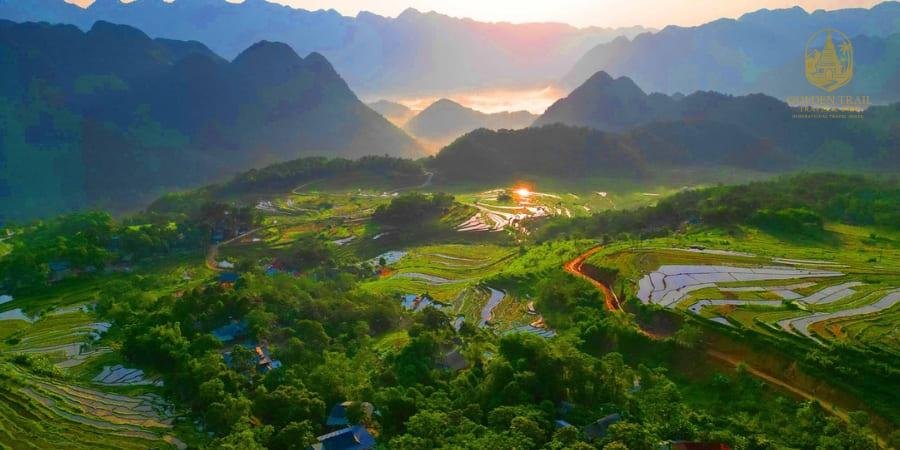
Witness the magic of a Pu Luong sunrise/sunset. Trek to the best viewpoints and experience the breathtaking colors, peace, and natural beauty. Book your Pu Luong tour with Golden Trail Travel & DMC.
August 29, 2025
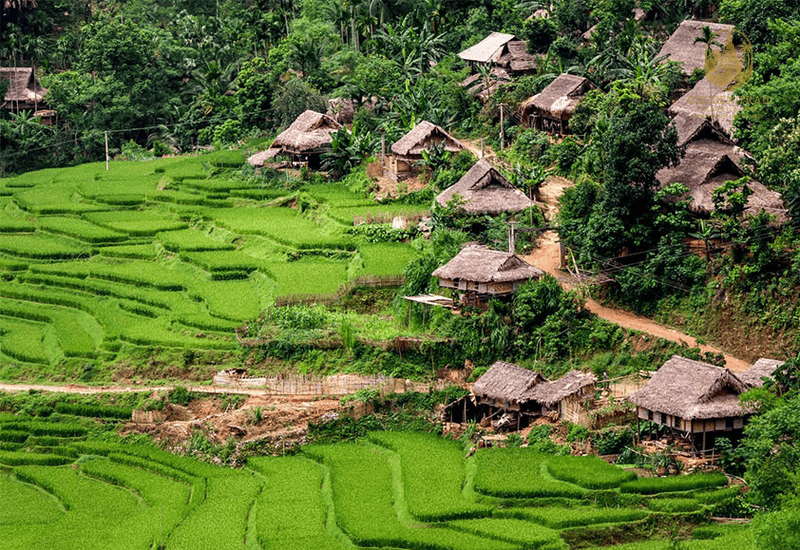
Journey into the soul of Pu Luong. Explore ethnic villages Pu Luong to experience a deep connection with local culture, life, and nature. Book an authentic tour with Golden Trail Travel & DMC.
August 29, 2025
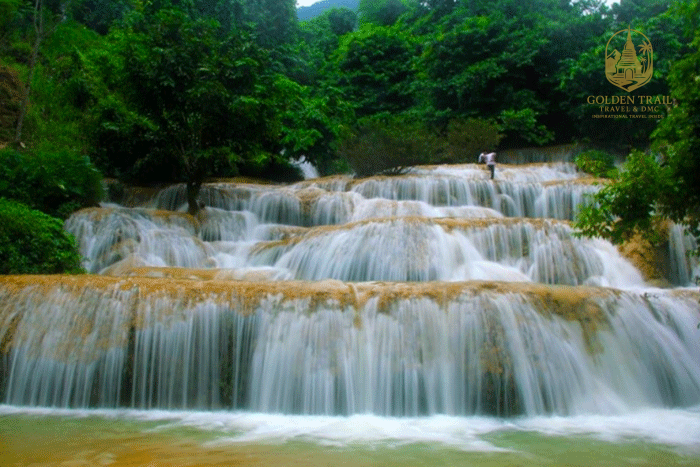
Discover the heart of Pu Luong with a trek to its majestic waterfall. Experience the ultimate journey of peace, conquest, and natural beauty. Book your Pu Luong waterfall tour with Golden Trail Travel & DMC.
August 29, 2025
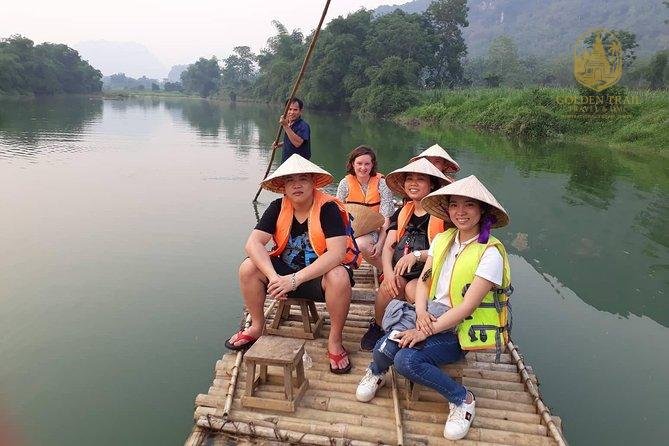
Drift into serenity with bamboo rafting Pu Luong. Discover the tranquility of the Cham Stream, iconic waterwheels, and lush landscapes. Book your unforgettable tour with Golden Trail Travel & DMC.
August 29, 2025